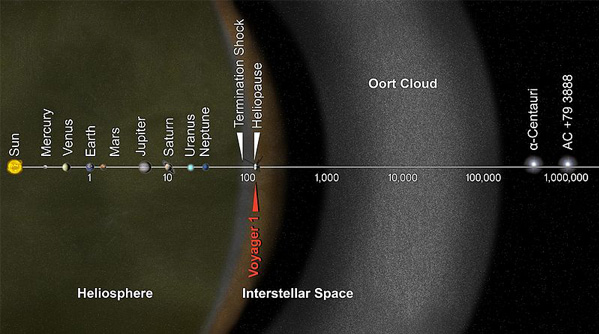The Oort Cloud
The Oort Cloud is the most distant region of our solar system, many times further away than the distant Kuiper Belt. Whereas the orbits of the planets and even the Kuiper Belt lie mostly in the same flat disk around the Sun, the Oort Cloud is believed to be a giant spherical shell surrounding the rest of the solar system. The rotational motion of the planetary disc from which the planets formed can be seen as resulting from conservation of angular momentum where any angular motion of the cloud from which the solar system formed is accentuated by the "spinning skater effect". When the mass gets closer to the rotation axis, the angular velocity increases. But outer gaseous material like water molecules may not fully share in that angular momentum and remain as a nearly spherical cloud. Later condensation and accretion could produce icy chunks of material.
It is suspected that the Oort Cloud is the source of comets, partly because the periods of some of the comets are so long. For example, comet C/2013 A1 Siding Spring, which made a very close pass by Mars in 2014, will not return to the inner solar system for about 740,000 years. (NASA artist conception of comet near Mars.) |  |
The presumed distance to the Oort Cloud is so great that it is typically stated in astronomical units or AU, where 1 AU is the distance between Earth and the Sun. For perspective, Pluto's elliptical orbit varies between 30 AU and 50 AU. Even though the objects of the Oort Cloud have not been directly observed, they are thought to begin between 2,000 and 5,000 AU from the Sun. The outer edge is even more uncertain, maybe 10,000 or even 100,000 AU. That larger number is more than a quarter of the way to the nearest star, Proxima Centauri. It is considered to extend more than a thousand times as far from the Sun as the Kuiper Belt.

Image from Wikipedia
Though long-period comets observed among the planets are thought to originate in the Oort Cloud, no object has been observed in the distant Oort Cloud itself, leaving it a theoretical concept for the time being. But it remains the most widely-accepted explanation for the origin of long-period comets. Dutch astronomer Jan Oort proposed the existence of the cloud to explain (among other things) where long-period comets come from, and why they seem to come from all directions rather than along the orbital plane shared by the planets, asteroids and the Kuiper Belt.
Solar System Illustration
Solar System Concepts
Reference
NASA Intro to Oort
Oort Cloud wiki
| HyperPhysics********** Astrophysics | R Nave |